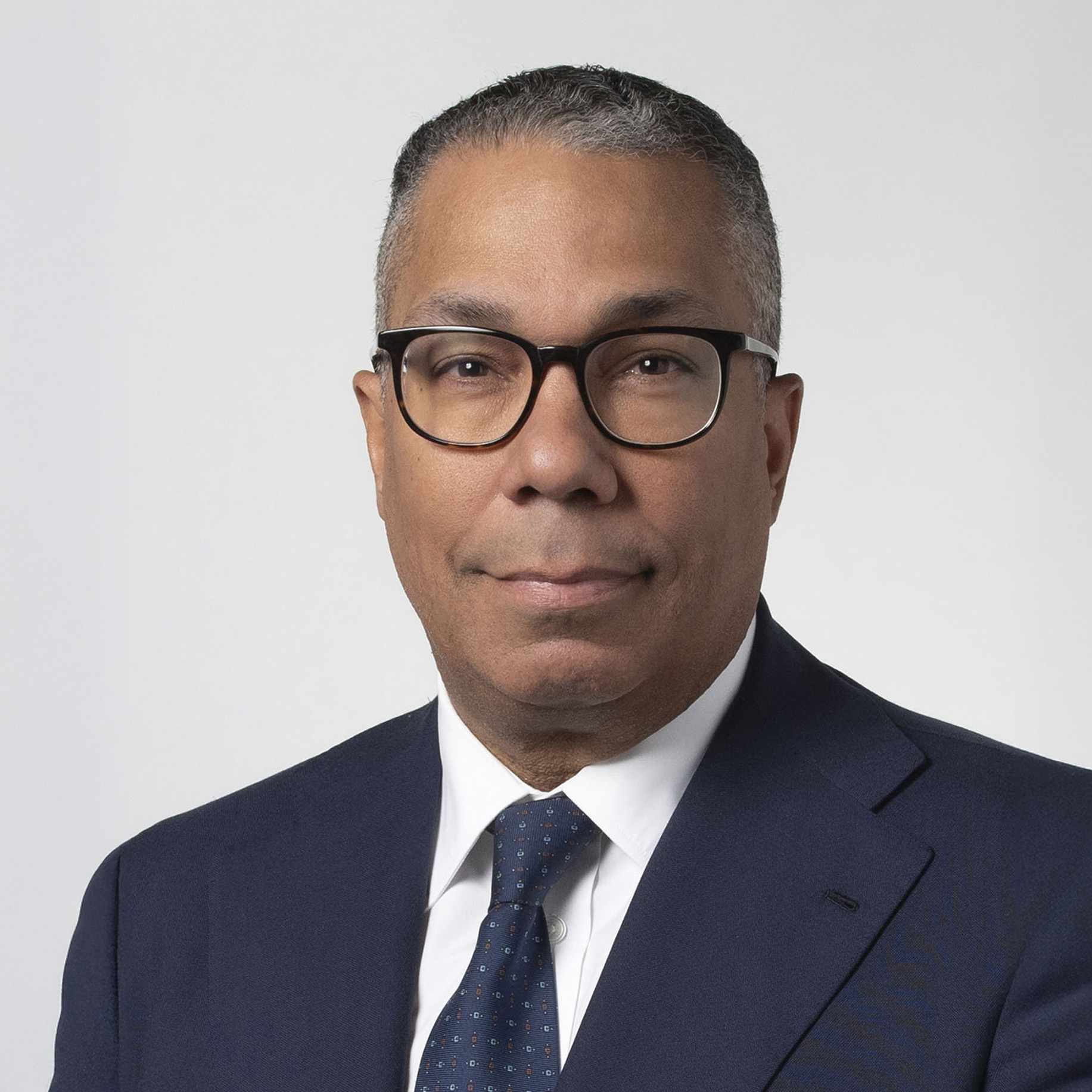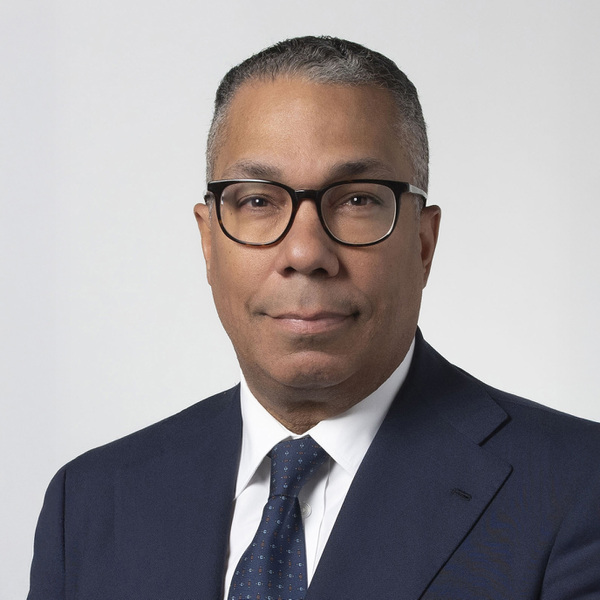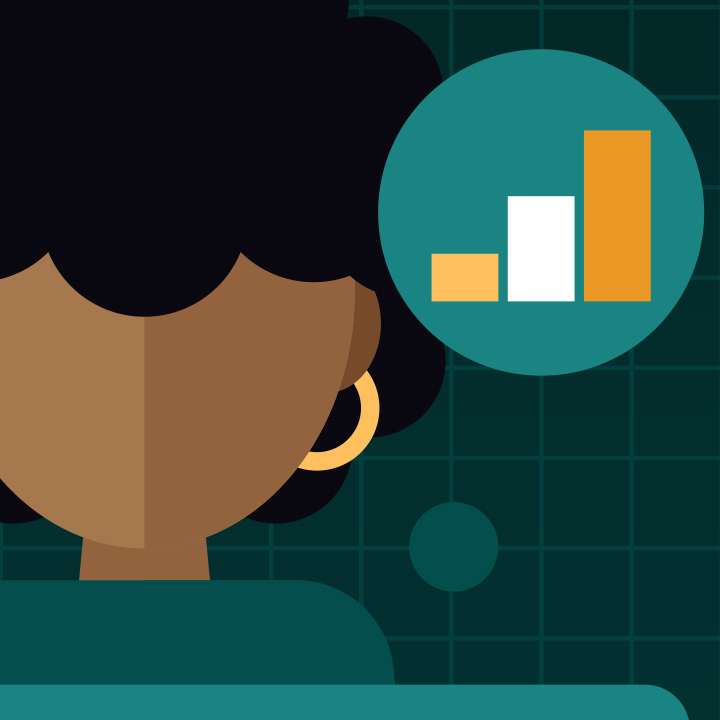Talent and passion can fuel a dream, but having discipline, perseverance, and an unwavering support system can transform that dream into reality. Nobody knows this better than Misty Copeland, America’s iconic ballet dancer. We recently hosted Copeland for a fireside conversation with her long-time advisor, BBH Partner Valentino Carlotti, to dive into this topic. She spoke with us about her incredible journey to becoming the first Black woman promoted to ballet’s highest level of principal dancer at American Ballet Theatre and reflected on obstacles she’s overcome, lessons learned, the power of mentorship, and the importance of giving back.
Beyond ballet, Copeland is a six-time author, an outspoken advocate for diversity in the arts, and a role model for body positivity and perseverance. She’s appeared in major media campaigns, films, and philanthropic efforts and recently launched the Misty Copeland Foundation, which is dedicated to making ballet accessible, affordable, and joyful for all children. She remains a force for change in the world of dance and a beacon of inspiration far beyond it.
Thanks for sitting down with us, Misty. One thing that has always fascinated me about your career is how similar it was to more traditional career journeys, where you get promoted to different levels. Can you give an overview of the structure of a ballet company?
At American Ballet Theatre, it’s similar to an apprenticeship. You typically start in a junior studio company, which is a select group of six women and six men.
You can then move up to the more senior company at some point. There, you would likely be in the corps de ballet, which is the large body of dancers you see framing those who are dancing in the center. They’re there to help create atmosphere and are so vital. I was in the corps de ballet for seven years, and it shaped me in so many ways to be able to do what I do now and be where I am as an artist and a performer.
Above the corps de ballet are soloists. They’re not the lead in the ballet, but they might have a solo or a pas de deux (with a partner) or trois (with three people).
Then, the principal dancers are the stars of the show. They are the featured characters.
Let’s go back to the beginning. Tell us about when you first discovered ballet at age 13.
I’m one of six children. I grew up an unstable, chaotic household – we moved a lot. I never felt I belonged anywhere. I was shy and introverted, and I didn’t want people to know what was going on at home.
I really leaned into music. My mother always played music around the house, and I naturally wanted to move and create when I heard it. It was mine – I didn’t have to share it with my siblings.
When I was 13, we were living in a motel. The one safe space that I considered home was the Boys & Girls Club, which we joined when I was 7 years old. At age 13, I decided I would audition for the drill team at my middle school. My family was shocked – I had never played a sport or taken a dance class – but I just felt such confidence when it came to movement. I had so much to say, and that was the perfect vocabulary for me to express it. I choreographed my own dance number, and I made the team – and was named captain, in fact!
It took off from there. A month or two into my time as captain, the drill team coach said I had a lot of talent and that I should consider taking free ballet classes at the Boys & Girls Club. I was hesitant – I wanted to dance to my favorite pop singers – but the coach pushed me.
Begrudgingly, I went in my socks, gym shorts, and T-shirt and took my first ballet class underneath the basketball hoop. At that first class, the teacher said she had never experienced a talent like mine. My musicality was there, and I was strong. She tried to bribe me with pointe shoes – I didn’t even know what they were – but within three months, I ended up going en pointe (which is not something I recommend for someone just starting).
How did you get that conviction that this was the thing for you, despite having no exposure before this?
My teacher was committed to nurturing my talent. Within a couple of weeks, she invited me to live with her because I had a lot of training to catch up on. She saw a career path for me. I agreed without knowing anything. I’d never seen a ballet. But the first time I stepped into her studio, and there were mirrors and barres, and I was in tights, slippers, and a leotard, I had never felt more at home. There was something so safe about that studio environment.
[T]he first time I stepped into her studio, and there were mirrors and barres, and I was in tights, slippers, and a leotard, I had never felt more at home.”
That’s not everyone’s experience when they enter a ballet class. There’s a lot of trauma that comes with the way that teaching ballet has been passed down from generation to generation, but I knew nothing of that culture. I entered into the space feeling like I could express myself in a way that was most natural for me.
Like I said, I was quiet growing up. To be able to find a language that I could fully express myself through was life-changing. It was difficult to articulate at the time, but when I was on stage, I was in this beautiful artistic bubble where no one could touch me. It was just me and my own body responsible for what the outcome was.
After that initial draw, what kept you coming back each day?
I was craving discipline, stability, and consistency. When I went to ballet class, there was structure and a beautiful progression of the class for 90 minutes – I knew what to expect.
My body relaxed when I was in class. A lot of people get to ballet class and it’s stressful; I heard the music, and I could let go.
Tell us about being a professional ballerina in the corps de ballet. Is it like what we see in the movies?
No! One of the reasons I started Life in Motion Productions is because I want to be able to change the narrative of the ballet world.
The media holds so much power in the stories that we tell and the on-screen representation. But there is so much more to share outside of the popular stories – there’s such a range of characters, people, experiences, and artists.
My experience in the corps de ballet was the closest thing I’ve experienced to being part of a team sport. You all share in this incredible experience, but there is a lot of painful work. There’s something so amazing that happens in those moments where you come together and bond, and you rarely see those beautiful experiences in the movies.
What does the training look like?
You typically take a 90-minute class six mornings a week. You then get a 15-minute break, and then the rehearsal day starts at noon. If you’re in a rehearsal period, you typically rehearse from noon to 7 p.m. You may get a five-minute break every hour, but that is about it.
During a performance period, it’s similar, except you rehearse until 5:30 p.m., and then you get a short break, and the performance starts at 7:30 p.m. And the show may not end until 10:00 p.m. or 11:00 p.m.
If you’re in the corps de ballet, you’re in every show. The luxury of being a soloist or a principal dancer is that you’re alternating with who the lead in the ballet is.
What are the qualities that you have to possess to be able to thrive throughout that demanding schedule?
There’s something so natural with the trajectory of ballet. The different ranks prepare you to handle each phase.
The mental and emotional preparation is part of the training process. It’s not just about our bodies. And we’re also preparing to be characters on the stage and tell stories through the language and technique of classical ballet. It takes a lot of patience, empathy, stamina, strength, and emotional intelligence.
In 2007, you were promoted to soloist, making you the second Black woman soloist in the company’s history. Is that when you started to really see a career path in ballet?
Even after that promotion, I did not think I was on the path to principal dancer. I remember so vividly being promoted to soloist and being told by my artistic director that I had worked hard, but not to get too comfortable because many others could also be in this position.
When I’m put in situations like that, I am often motivated to prove that I deserve to be there. And one of the things I did to help during that period was form an amazing group of mentors who prepared me in so many ways to navigate conversations that led me to becoming a principal dancer.
When I performed “The Firebird” for the first time in 2012, I was still a soloist, and that was the first time that I started to see a path to becoming a principal dancer.
Why was “The Firebird” such a big deal for you?
As a soloist, I had been given some principal roles over the years, but they were always in the more modern, contemporary works, which often happens with Black and brown dancers. I was fighting to be given the opportunity in the classical roles.
I actually found out I was performing the role through social media. It was such a special moment because I was surrounded by all of these other Black dancers who really understood the weight and meaning to be given that role.
I was excited, and I prepared in every way. As the first performance grew closer, I started having severe pain in my left shin. But I felt this was my last shot – I was at an age where it was late to be considered for principal dancer – so I decided to make it work. I sought outside guidance and figured out other ways to manage the pain.
I ended up performing one show, and that night is imprinted in my mind forever. It was the first time I’d ever seen the line wrapping around multiple blocks at the Metropolitan Opera House. It showed the power of diversity and the importance of representation, especially for people who want to come into this space but may not feel so welcome.
I pulled out of the season the following morning. I went to a doctor and found out I had six stress fractures in my tibia. Three of them were almost full breaks through the bone. I took a year off, but I felt like I had proved myself that night.
You were promoted to principal dancer two years later. Talk about what happened when you reached that point.
I had earned it, but there was still a lot of negativity and criticism. I was 32 years old, which is ancient in ballet. It was the first season in my career that I’d ever experienced nerves because there was so much pressure. I just wanted to enjoy the opportunities I was getting, so I continued to put in the work and push through.
Did you feel like you were representing the entire Black community?
I felt a big responsibility, sometimes more than others – the first time I performed “Swan Lake,” for example, which is not a traditionally Black role. I worried that if I failed, no Black woman would ever be given that opportunity again. It was the most pressure that I ever felt.
Overall, though, I kept thinking about how fortunate I was to be in that position. I think I was given the opportunity because of the incredible support that I had and the mentors that prepared me to be able to articulate and advocate for myself.
I think I was given that opportunity because of the incredible support I had and the mentors that prepared me to be able to articulate and advocate for myself.”
It was certainly a period of finding my voice and learning how to fight for myself. It took a long time for me to really accept that I belonged and deserved to be here.
You’ve done a great job finding mentors and partners that have helped you throughout your career. How do you find those relationships and cultivate them?
My time at the Boys & Girls Club gave me an understanding of what it meant to have mentors in my life. A lot of young people I’ve interacted with think they can do it all on their own or are just not open to receiving help and advice, so they don’t even know that these people are right in front of them. I’ve been very open to seeing them and saying, “I want your help.”
Mentorship has been vital for me and has been the backbone of my success throughout my career. Mentors helped me grow and shift in situations that could have gone in a different direction if I didn’t have that kind of support in my life.
Now, I aim to pass it forward. My new book, “Letters to Misty,” includes responses to letters I’ve received over the course of 25 years of dancing professionally. It’s written for all young people discovering who they are, exploring their identity and relationships, and navigating a lot of issues that we still face as adults.
You’ve taken a break from dancing since an injury in early 2020. Besides writing, how else have you been filling your time?
My purpose has definitely grown and changed. Before, it was very singular – I was focused on climbing the ranks and fulfilling my responsibility of representing the Black community. I got to a point where I thought, I’ve done all I can as a Black body on the stage.
When the pandemic hit, I took the time to reassess what I was doing and how I was using my voice. That’s when I decided to start the Misty Copeland Foundation, which filled a void. I never thought I would find something as fulfilling as being on stage, but the work that I’m doing giving young children and the under-resourced community access to the arts is an organic next progression for me. It feels like the right time for me to transition into this next phase and use my voice and platform in a way that will continue to challenge the ballet world and community to grow.
Tell us about how motherhood has also changed how you think about things.
The periods of growth and development in the ballet world prepared me to be a mother. Being part of a team and community has taught me so much about myself. I was ready to be in a place where I wasn’t just pouring into myself all the time, but into this other being.
Motherhood has allowed me to grow in ways I didn’t know I could still grow. I’ve learned to be more present and give so much of myself, even when I don’t think I have anything left to give. It’s such a beautiful thing to feel this sense of purpose in a completely different way than I have throughout my career.
I’ve watched you come into yourself over the years, and you seem very content with where you are. Do you feel nicely settled?
It goes back to why I wanted to be a part of this art form in the beginning. It’s so fulfilling. It’s a beautiful escape. It’s a sense of home. I love to dance, and I try not to lose sight of that and get overwhelmed with all the expectations and responsibilities.
Thank you for your time, Misty.
Interview conducted by Valentino Carlotti, and article written by Kaitlin Barbour.
Contact Us
Brown Brothers Harriman & Co. (“BBH”) may be used to reference the company as a whole and/or its various subsidiaries generally. This material and any products or services may be issued or provided in multiple jurisdictions by duly authorized and regulated subsidiaries. This material is for general information and reference purposes only and does not constitute legal, tax or investment advice and is not intended as an offer to sell, or a solicitation to buy securities, services or investment products. Any reference to tax matters is not intended to be used, and may not be used, for purposes of avoiding penalties under the U.S. Internal Revenue Code, or other applicable tax regimes, or for promotion, marketing or recommendation to third parties. All information has been obtained from sources believed to be reliable, but accuracy is not guaranteed, and reliance should not be placed on the information presented. This material may not be reproduced, copied or transmitted, or any of the content disclosed to third parties, without the permission of BBH. All trademarks and service marks included are the property of BBH or their respective owners. © Brown Brothers Harriman & Co. 2025. All rights reserved. PB-08666-2025-06-23



